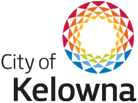Crews Continue Flood Protection Removal News Release #127
Today, crews are focusing their flood protection removal measures on public and private property in various waterfront areas of Kelowna, Peachland and West Kelowna.
This stage of the recovery process will accomplish the full demobilization of all flood protection – a process expected to continue into August. Crews will remove any remaining protective barriers on both private and public land. Neighbourhoods will be notified via Emergency Operations Center communications channels (sign up for e-updates at www.cordemergency.ca), electronic signboards and the media.
Residents with sandbags that are no longer necessary can take them to the roadside of their property, where work crews will be travelling through neighbourhoods to collect them. Sandbags can also be dropped off at designated locations, which are indicated on the map at www.cordemergency.ca. Under no circumstances should sandbags be emptied into any creeks, lakes, wetlands, beaches or other natural areas.
Property owners with sandbag walls can begin to lower them, but should maintain a wall that protects against wind and wave action to a height of 60 centimetres above the current lake level. Residents removing sandbags and working around stagnant water should also take precautions to protect themselves, by wearing gloves and rubber boots, as well as washing hands regularly.
More information about sandbag locations for drop off, debris removal, details about recovery efforts, and a link to the online Emergency Management BC sandbag recovery application, can be found at www.cordemergency.ca/beprepared/flood-recovery.
Water quality
In the interest of public safety, Interior Health, local governments and water purveyors in the Central Okanagan regularly test for drinking water and beach water quality. At the present time latest results show all beach water quality in this region is good. If there are fluctuations with drinking water, each water utility in consultation with Interior Health provides the appropriate update and information for its residents and water customers. For updates, visit the Water Samples page on www.interiorhealth.ca or check with individual water suppliers or local governments.
No and low wake boating areas
Those residents and visitors who are planning on boating on area lakes are encouraged to follow the guidelines for respectful boating. Boaters can view the Boating Wake maps at www.cordemergency.ca/map, which indicate no and low wake boating areas in order to protect against wave action and shoreline erosion. Once lake levels reach more reasonable levels, regular boating activities can resume.
Lake levels
When the level of Okanagan Lake reaches 342.60 metres above sea level, most beaches are expected to reopen, and most docks should be above water again. When the lake returns to its normal full-pool level of 342.48 metres, all beaches will reopen and boating activity can return to normal.
Okanagan Lake dropped 1.3 centimetres over the past 24 hours and is now at 342.914 metres above sea level which is 43 centimetres over full pool while Kalamalka Lake decreased 1.3 centimetres and is now at 392.14 metres and remains 44 centimetres above full pool.
For municipal information such as boat launch, park and beach closures, and water quality advisories, visit their websites:
To stay informed about flooding and the recovery efforts, visit www.cordemergency.ca, sign up for e-updates or call the information line at 250-469-8490.







